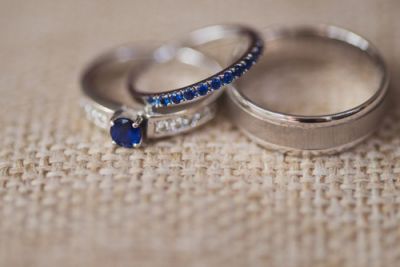 Decades ago, young men were expected to choose pricey diamond engagement rings for their sweethearts. Some couples now seek alternatives due to concerns about ethics and financial feasibility. Some analysts and economists declare that millennials are killing the diamond industry. Meanwhile, savvy shoppers seek other options for their engagements and marriages.
Decades ago, young men were expected to choose pricey diamond engagement rings for their sweethearts. Some couples now seek alternatives due to concerns about ethics and financial feasibility. Some analysts and economists declare that millennials are killing the diamond industry. Meanwhile, savvy shoppers seek other options for their engagements and marriages.
Clever Marketing Creates a New Tradition
Examining the history of diamond engagement rings reveals some fascinating and startling discoveries. In the 1930s, a significant diamond supply surplus motivated the British company De Beers to search for ways to boost demand. Jim Varga explains in The Swamp that innovations in electrical power delivery made mining easier. These developments and the industrialization of South Africa helped create such a large surplus.
As jewelry sales plummeted during the Great Depression, De Beers found itself owning a very large diamond supply. In an October 2017 Brides article, Liz Susong mentions that De Beers teamed up with ad agency N.W. Ayer to launch a clever marketing ploy and drive up demand. The resulting ad campaign convinced young men to fork over large sums for diamond rings. The ruse worked, enshrining these jewelry pieces as necessary for demonstrating one’s love and commitment.
Are Diamond Rings on the Way Out?
The Economist posed the question, “Why aren’t millennials buying diamonds?” in a June 2016 piece. “Young consumers increasingly shun the taint of conflict and exploitation,” the publication insisted. Concerns do exist about “blood diamonds” in the international market, but that’s only a small part of the story behind declining sales.
The Economist’s assertions gained mockery and ire from Twitter users. Many pointed to financial uncertainty and lackluster job prospects among younger adults. A few even quoted a 1999 statement made by former De Beers chairman Nicky Oppenheimer. “Diamonds are intrinsically worthless," he said, "except for the deep psychological need they fill.”
Say Hello to Synthetic Stones
According to a May 2018 Business Insider report, lab-grown gems cost 30 to 40 percent less than naturally mined gems. They're created using powerful microwave plasma ovens that change natural gas into carbon plasma. The plasma then sticks to tiny diamond fragments inside the ovens, increasing their size over a period of several weeks. A Practical Wedding’s Maggie Eisenhart discloses that there are no discernable differences between a synthetic diamond and its natural counterpart. Telling the two apart requires an expert examination using a microscope.
Consumers Look for More Alternatives
Meanwhile, some couples look for other options for their engagement and wedding rings. The Knot’s Miles Stiverson advises readers on how to buy ethically sound diamonds. Stones certified by the United Nations’ Kimberly Process meet standards for being conflict-free. The United States company Brilliant Earth follows stricter standards for selecting its diamonds. As a result, it only offers stones sourced by ethically and environmentally responsible methods. Bridal Musings presents other alternatives to traditional diamonds. Several on the list are softer stones, but some varieties are more robust:
- Sapphire, available in colors such as pink, yellow, green, and white
- Ruby, with stones ranging from pink to deep crimson
- Topaz, which comes in several shades
The International Gem Society explains how the Mohs scale rates gemstone hardness. While diamonds rank at a 10, rubies and sapphires usually rate at 9 while topaz usually sits at around 8. Stones that rate at 7 or higher are ideal, since they’ll better withstand daily wear.
A Huge Range of Possibilities
In his article for The Swamp, Jim Varga speculated that diamond rings may fall out of favor from a widespread rejection of “manufactured tradition and materialism.” Whether they become obsolete or not, you can find plenty of other options for brilliant and durable gemstones in your engagement or wedding rings.
Add Your Comment